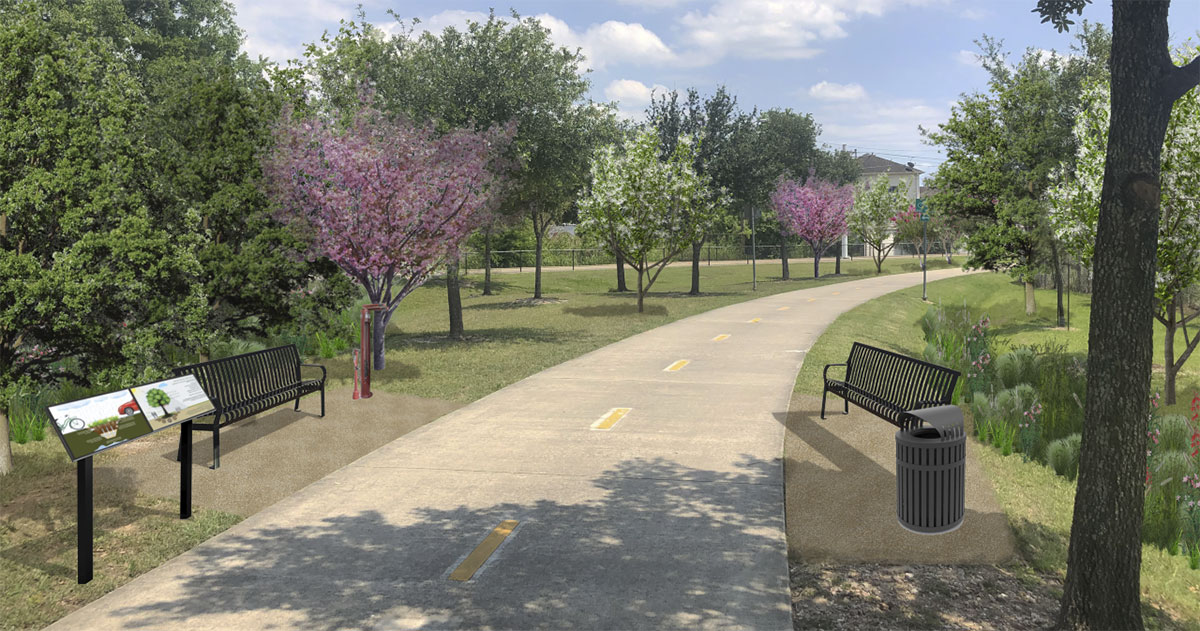The Columbia Tap Hike and Bike Trail is four-mile path through the middle of Third Ward. Once a railway, the trail provides a path for many Houstonians to hike, bike and walk, which is important to many community members who may not have access to transportation. But the trail needs improvement.
UH architecture student David Rincon is studying the impact of environmental design on people and communities by re-envisioning the Columbia Tap Trail. A safe and beautiful shaded trail will provide an ecologically-sound environment and will encourage people to use it. This will also create a great alternative to driving in a very car-centric place like Houston. Any improvements to a trail that will lend itself to green transportation is a win for the entire city.
The path crosses through EaDo and Third Ward, with one end almost extending all the way to the Texas Medical Center. While Rincon is interested in learning about the health impacts of the trail on community members, he also aims to design amenities, including shade and benches, along the path. This will improve the air quality of the area and of Houston, in general.
Columbia Tap Trail includes currently unused land helpful for storm water mitigation, in an area of Houston that doesn’t currently flood. Additional trees will reduce the heat island effect, also. Rincon conducted heat mapping of the trail to determine the best placement for shade trees.
Rincon has met with many community and non-profit organizations regarding the design project including Tejano Center, Healthy Outdoor Communities, Change Happens, Trees for Houston and the local Rotary Club. All these, and more, contributed to the plans for Columbia Tap.
Some of the most meaningful interactions took place after Rincon actually rode the trail himself. He found himself talking to residents of Third Ward and locals who use the path. He believes that talking to the people who are going to live with your design is important.
“It’s crucial to interact with the people who know more than you do about the site,” said Rincon. Once those people and community organizations are identified, the architect’s job is to create and help their shared vision come to fruition.
Rincon’s project documentation includes the enhancement of an area along the northern portion of the Columbia Tap Trail, just in time for the Rotary International Convention in June 2022. This convention is estimated to have 30,000 attendees, which will increase the number of people exposed to the project.
Ricon’s research is supported by the Action Research in Communities Program (ARC), housed in the Honors College and the Office of Undergraduate Research and Major Awards.
Image: Columbia Tap Trail
